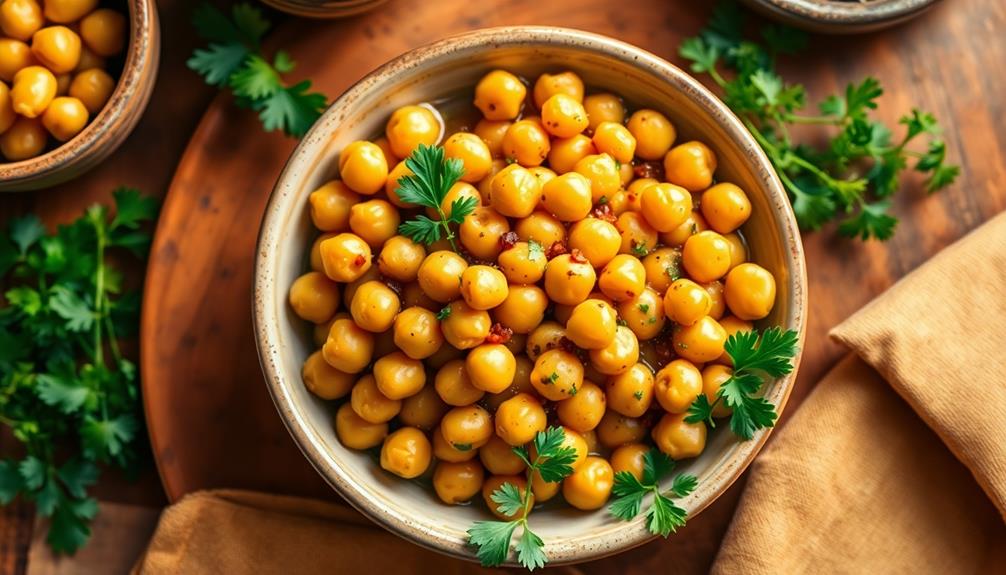Dandelion greens, known as hindbe, have an incredible history as a staple in traditional cuisines worldwide. From ancient Egypt to modern Mediterranean and Asian cultures, these nutritious leaves have been revered for centuries. To prepare them, you'll first trim and rinse the greens, then briefly blanch them to soften the fibrous leaves. Be sure to squeeze out excess water so the flavors can truly shine. Dress the hindbe with flavorful olive oil and lemon, then serve immediately while hot and vibrant. Dandelion greens offer a unique, slightly bitter taste that's perfect for salads, sautés, and more – and their superfood benefits make them a true culinary superstar.
Key Takeaways
- Hindbe, or dandelion greens, have a rich history as a staple in traditional cuisines globally, with origins tracing back centuries.
- Dandelion greens are a nutrient-dense superfood, packed with vitamins A, C, and K, as well as minerals like calcium, iron, and potassium.
- Proper preparation of hindbe involves trimming, rinsing, briefly blanching, and dressing with olive oil and lemon for optimal flavor and texture.
- Dandelion greens can be used in a variety of culinary applications, from salads and sautés to soups and smoothies.
- Hindbe can be easily grown in gardens or wild settings, making them a versatile and accessible ingredient for home cooks.
History
The origins of hindbe, or dandelion greens, can be traced back centuries. These hardy, nutrient-rich plants have been a staple in many traditional cuisines around the world. Across Europe and the Middle East, hindbe have been foraged and cultivated for their distinct, slightly bitter flavor and vibrant green leaves.
In ancient Egypt, hindbe were revered for their medicinal properties and often used in tonics and remedies. The ancient Greeks and Romans also prized these greens, incorporating them into salads and cooked dishes.
During the Middle Ages, hindbe became a common sight in monastery gardens, where they were used to nourish the monks.
Today, hindbe continue to be enjoyed in a variety of cultural traditions, from the Levant to North Africa. Their versatility and health benefits have made them a beloved ingredient in many modern kitchens as well.
Whether sautéed, stir-fried, or used in soups, these hardy greens offer a delightful and nutritious addition to any meal.
Cooking Steps
After procuring the fresh dandelion greens, begin by thoroughly rinsing them under cool running water. This helps remove any dirt or debris that may be clinging to the leaves.
Once they're clean, give the greens a gentle pat with a paper towel to remove excess moisture.
Next, you'll want to chop the dandelion greens into bite-sized pieces. This will make them easier to cook and eat. Aim for pieces that are around 1-2 inches long. You can use a sharp knife or kitchen shears for this step.
To cook the greens, start by heating a tablespoon of olive oil in a large skillet over medium heat.
Once the oil is hot, add the chopped dandelion greens and sauté them for about 5-7 minutes, stirring occasionally, until they're tender and wilted. Season with a pinch of salt and pepper to taste.
Serve the sautéed dandelion greens warm, and enjoy their slightly bitter, earthy flavor. They make a wonderful side dish or can be incorporated into a variety of recipes.
Step 1. Trim and Rinse the Greens
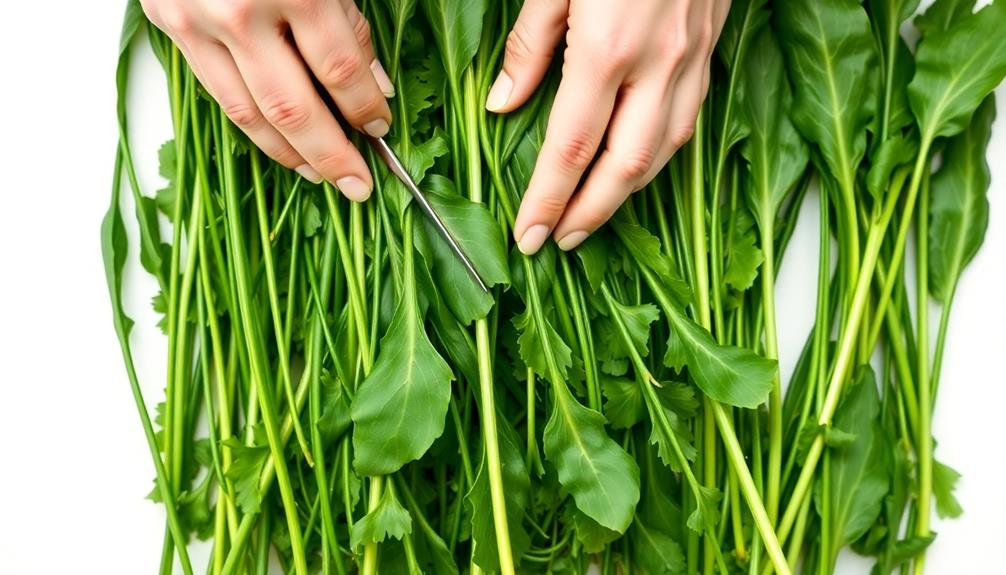
Gently separate the greens and carefully trim off any damaged or discolored ends.
You'll want to inspect each leaf closely, removing any browned or wilted parts. This ensures the entire bundle is fresh and ready to cook.
Next, it's time to give the greens a good rinse. Place them in a large bowl or colander and run cool water over them, gently swishing the leaves to dislodge any dirt or debris.
Avoid letting the greens sit in the water, as that can cause them to lose flavor and nutrients.
Once they're clean, give them a gentle pat dry with a clean towel or paper towels. Be careful not to bruise the delicate leaves.
Now your hindbe (dandelion greens) are prepped and ready to transform into a tasty, nutritious dish!
The key is taking the time to carefully clean and trim the greens – that way, you can enjoy their full, vibrant flavor.
Step 2. Blanch the Greens Briefly
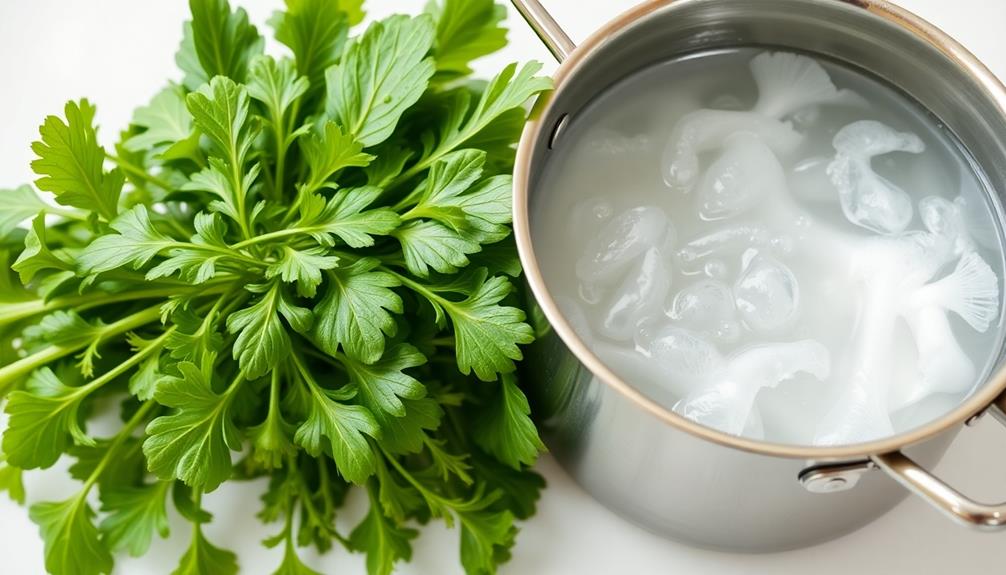
Blanching the greens briefly is a crucial step in preparing delicious hindbe (dandelion greens). This quick cooking process helps to soften the tough, fibrous leaves and removes any bitterness.
Plus, it preserves the vibrant green color, making your dish look absolutely mouthwatering.
To begin, bring a large pot of water to a boil. Once the water is bubbling, carefully add the trimmed and rinsed dandelion greens.
Let them cook for just 30 to 60 seconds – you don't want them to overcook and become mushy. Drain the greens immediately in a colander and give them a quick rinse with cold water.
This stops the cooking process and helps the leaves retain their crisp, tender texture.
After blanching, you can proceed to sauté or prepare the greens in your desired recipe. Blanching ensures the hindbe are perfectly cooked and ready to enjoy.
Get ready for a delightful burst of flavor in every bite!
Step 3. Squeeze Excess Water From Greens
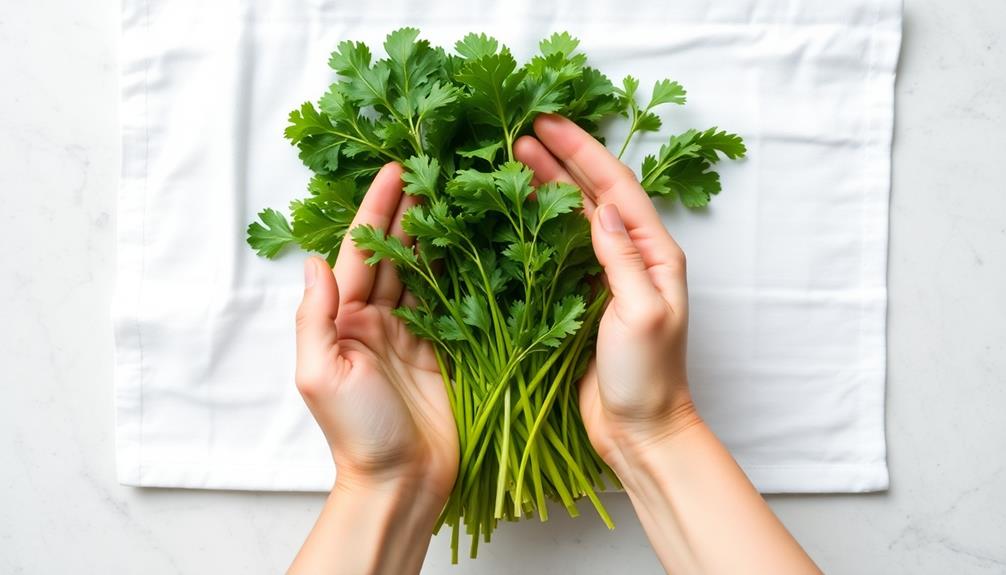
Once you've blanched the dandelion greens, the next step is to squeeze out any excess water. This is an important step, as you don't want your dish to turn out watery.
Grab a handful of the greens and firmly squeeze them over the sink. You'll be amazed at how much water comes out! Keep squeezing until the greens feel much drier. This will help them absorb all the delicious flavors you'll be adding later.
Don't be afraid to really press down on the greens – you want to get as much liquid out as possible. Once you've squeezed the first batch, move on to the next handful.
Continue this process until you've gone through all the greens. It might take a few minutes, but it's worth it to ensure your hindbe turns out perfectly seasoned and flavorful.
With the excess water removed, the greens are now ready for the next step in the recipe. Get excited, because you're well on your way to enjoying a tasty dish of homemade dandelion greens!
Step 4. Dress With Olive Oil, Lemon
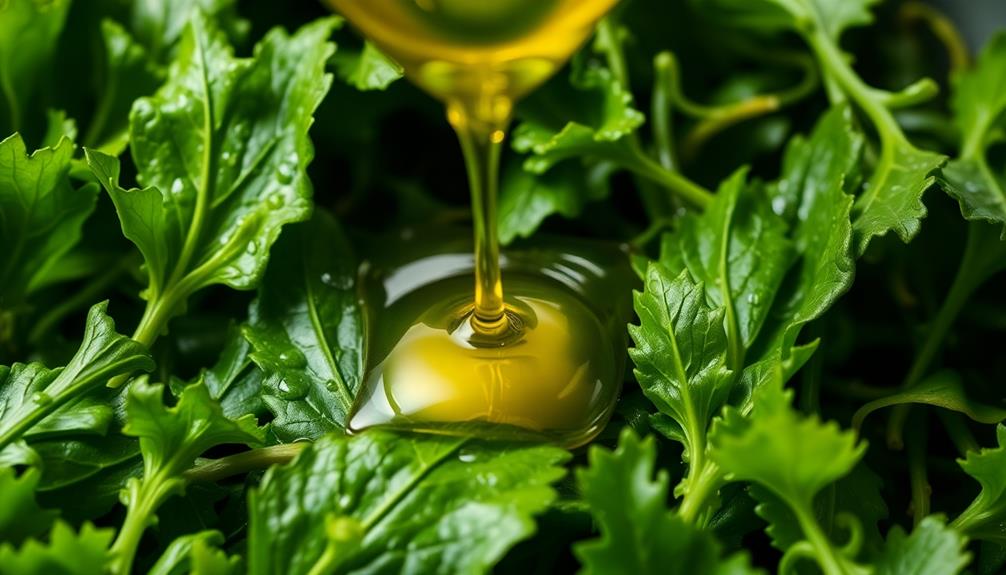
With the excess moisture removed, you can now dress the greens.
Grab a nice big bowl and add a few tablespoons of your best extra virgin olive oil. Give it a good swirl to coat the leaves.
Next, grab a fresh lemon and give it a good squeeze right over the greens. The tangy lemon juice will dance with the rich olive oil, creating a simple yet delicious dressing.
Proper diet for pets is essential for their health.
Use your hands to gently toss the greens, making sure every leaf is evenly coated. The olive oil and lemon will bring out the natural bitterness of the dandelion greens, balancing the flavors perfectly.
Feel free to add a pinch of salt and pepper too, if you like. The dressing should lightly cling to the leaves, not drown them.
Now you're ready to enjoy these nutrient-packed greens! The bright, zesty flavors will surely wake up your taste buds.
Step 5. Serve Immediately While Hot
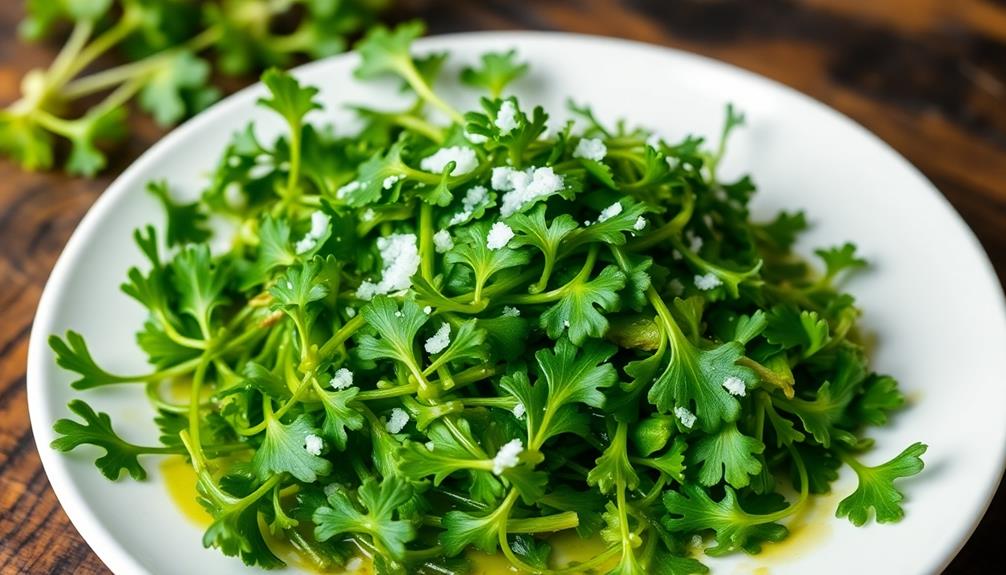
After dressing the greens, it's time to get them on the table. Don't wait – you'll want to serve the hindbe (dandelion greens) immediately while they're piping hot. The aroma is mouthwatering, and you can practically hear them calling your name!
Scoop up those vibrant, nutrient-packed leaves and transfer them to a serving dish. Be careful, as they'll be nice and tender. Drizzle any remaining dressing from the bowl over the top to keep every bite flavorful.
Now, gather your family or guests and invite them to dive in. The hot greens will melt in their mouths, with the bright lemon and rich olive oil dancing on their palates. Encourage everyone to savor each flavorful forkful – this is a delicious and healthy dish that deserves to be truly appreciated.
Don't let the hindbe sit for too long, or they'll lose their perfect texture and temperature. Serve them up hot and watch them disappear in no time. Mmm, what a tasty, nourishing treat!
Final Thoughts
Dandelion greens, a versatile vegetable, offer a wealth of benefits that make them a worthy addition to any diet.
These nutrient-dense leaves pack a powerful punch, delivering an impressive array of vitamins, minerals, and antioxidants. From their vibrant color to their slightly bitter taste, dandelion greens are a unique and exciting culinary experience.
Whether you sauté them, add them to salads, or incorporate them into your favorite recipes, these greens are sure to delight your taste buds. Their versatility allows you to experiment and find new ways to enjoy them.
Plus, with their numerous health benefits, you can feel good about indulging in this superfood.
As you continue your culinary journey, don't hesitate to explore the wonders of dandelion greens.
Embrace the opportunity to nourish your body and tantalize your palate with this remarkable vegetable. There’s no better way to experience the full potential of this amazing vegetable than by enjoying it in a traditional Loubieh Bi Zeit recipe. This delicious dish, made with fresh green beans, tomatoes, onions, and olive oil, is a staple of Lebanese cuisine and is sure to transport your taste buds to a world of rich flavors and vibrant colors. So why not seize the chance to elevate your culinary experience and savor the natural goodness of green beans in a dish that has stood the test of time?
Get ready to discover a world of flavor and wellness with every bite of these delightful dandelion greens.
Frequently Asked Questions
What Are the Health Benefits of Consuming Dandelion Greens?
Dandelion greens are a powerhouse of nutrition! When you eat them, you're giving your body a boost of vitamins A, C, and K.
Plus, they're loaded with fiber, which helps keep your digestive system running smoothly.
The best part? Dandelion greens are versatile – you can enjoy them raw in salads or sautéed with a bit of garlic.
How Do I Store and Preserve Dandelion Greens?
To store and preserve your fresh dandelion greens, start by gently washing them and patting them dry.
You can then wrap them in a damp paper towel or cloth and place them in a resealable bag in the refrigerator. This will help them stay crisp for up to 5 days.
For longer storage, you can even freeze the greens by blanching them first. Just toss them in boiling water for a minute, then quickly cool them in an ice bath before freezing.
Easy peasy!
Can Dandelion Greens Be Consumed Raw in Salads?
Absolutely! You can enjoy dandelion greens raw in salads.
They've a slightly bitter, earthy flavor that adds a nice punch to your greens. Just be sure to thoroughly wash the leaves before using them.
The tender, young dandelion greens are perfect for salads, while the older, tougher leaves work better when cooked.
Give it a try – you'll be surprised by how delicious raw dandelion greens can be!
Are There Any Potential Side Effects of Eating Dandelion Greens?
Eating dandelion greens can be a tasty and healthy choice, but there are a few things to keep in mind.
First, they may cause some digestive issues like bloating or diarrhea, especially if you eat a lot of them. Additionally, the greens contain compounds that can interact with certain medications, so it's always best to check with your doctor before adding them to your diet.
But overall, dandelion greens are packed with nutrients and can be a great addition to your meals!
How Do I Identify and Distinguish Dandelion Greens From Other Similar Greens?
Identifying dandelion greens can be tricky, but don't worry!
Look for leaves that are broad, jagged, and have a distinctive yellow flower on top. They might also have reddish stems.
Dandelion greens are similar to other leafy greens, but they've a slightly bitter taste that sets them apart.
With a keen eye and a curious spirit, you'll be able to spot these nutritious veggies in no time!





